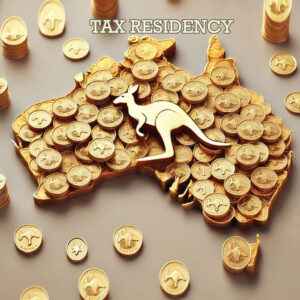Negative gearing is a popular tax strategy among property investors in Australia. By understanding how it works, you can use it to potentially reduce your taxable income while building long-term wealth through property investment.
What is Negative Gearing?
Negative gearing occurs when the expenses associated with owning an investment property exceed the rental income generated by the property. These expenses typically include:
- Mortgage interest payments
- Property management fees
- Maintenance costs
- Depreciation on the building and fittings
- Council rates and insurance premiums
The shortfall between the income and expenses creates a loss that can be deducted from your other income sources, reducing your overall taxable income.
Steps to Save Tax Through Negative Gearing
- Choose the Right Investment Property
- Look for properties in high-demand rental markets where capital growth is likely.
- Ensure the property has potential for long-term appreciation, as this offsets the short-term cash flow loss.
- Understand Tax Deductions
- Interest on Loans: The interest component of your mortgage is usually the largest deductible expense.
- Depreciation: Claim depreciation on the building and eligible assets like appliances.
- Repairs and Maintenance: Immediate repairs are deductible, but improvements may need to be depreciated over time.
- Other Costs: Expenses like property management fees, legal fees, and council rates are deductible.
- Maximize Depreciation Benefits
- Engage a qualified quantity surveyor to prepare a depreciation schedule for your property.
- Depreciation deductions can significantly reduce your taxable income without affecting your cash flow.
- Keep Accurate Records
- Maintain meticulous records of all income and expenses related to the property.
- Use property management software or consult a tax professional to ensure compliance.
- Consult a Tax Professional
- A tax advisor can help you navigate complex tax laws and ensure you’re claiming all eligible deductions.
- They can also help you strategize for optimal tax outcomes, including timing deductions for maximum impact.
Benefits of Negative Gearing
- Tax Savings: The primary benefit is the reduction of taxable income, potentially resulting in a lower tax bill.
- Wealth Creation: By investing in properties with high capital growth potential, you can build wealth over the long term despite short-term losses.
- Portfolio Diversification: Property investment diversifies your portfolio, balancing risks from other investments like stocks.
Risks and Considerations
While negative gearing offers significant tax advantages, it’s not without risks:
- Cash Flow Challenges: You must be able to cover the shortfall between rental income and expenses.
- Market Risks: Property values can fluctuate, and capital growth is not guaranteed.
- Regulatory Changes: Tax laws and policies around negative gearing may change, potentially affecting your strategy.
Conclusion
Negative gearing can be an effective way to save on taxes while investing in property. However, it’s essential to approach this strategy with careful planning and professional advice. By understanding the deductions available and choosing the right property, you can use negative gearing to your financial advantage, turning short-term losses into long-term gains.
Disclaimer: The information provided in this article is general in nature and does not constitute professional advice. By reading this article, you acknowledge and agree that the information is for informational purposes only. Honest & Young advises you not to act or refrain from acting based on any content herein. Honest & Young and the author of this article make no guarantees regarding the accuracy, currency, or completeness of the information. Always seek professional tax or business advice relevant to your situation.





